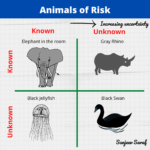In 2007, after investigating the explosion and fire at BP’s Texas City facility, the US Chemical Safety and Hazard Investigation Board (CSB) recommended OSHA to launch a PSM National Emphasis Program (NEP). The objective of the NEP was to reduce the hazards associated with petroleum refineries. As a part of the NEP initiated in June 2007, OSHA inspected 81 refineries.
So far OSHA has issued more than 500 citations as a result of the NEP audits with approximately 2.7 -million dollars in fines. During the NEP inspections, the top PSM elements identified for violation appear to be:
- Operating procedures
- Process safety information (PSI), and
- Process Hazard Analysis (PHAs)
In 2009 OSHA plans to initiate a similar effort focuses on the chemical industry.
Read the details about OSHA Chemical NEP.






One Response
Chemical facilities that are in state-plan states will not be subject to federal NEP inspections, but may be subject to state NEP or NEP-like inspections. The experience with the refinery NEP indicates that some states will choose to implement an in-state NEP program and some will not. States are required by the new CPL to inform OSHA of their intent and will post
their responses on its website when they are received.